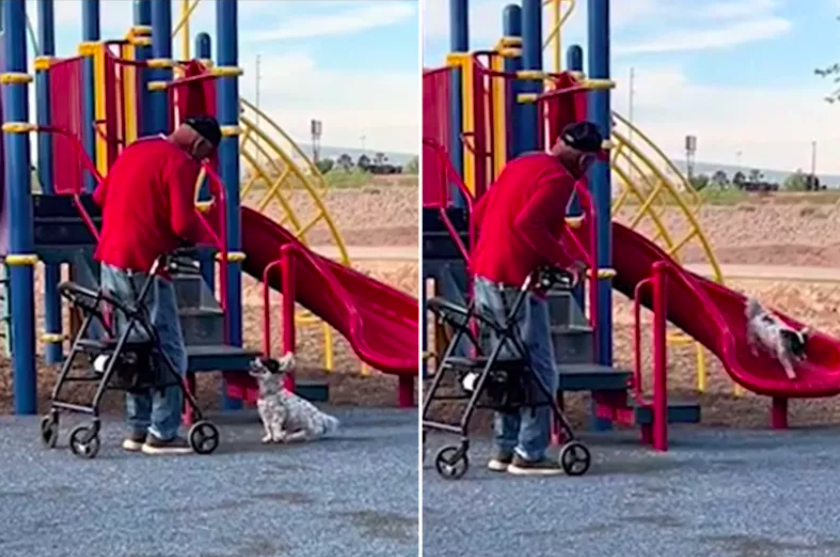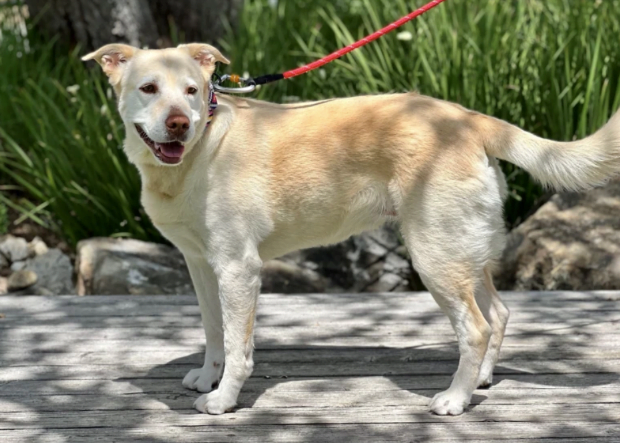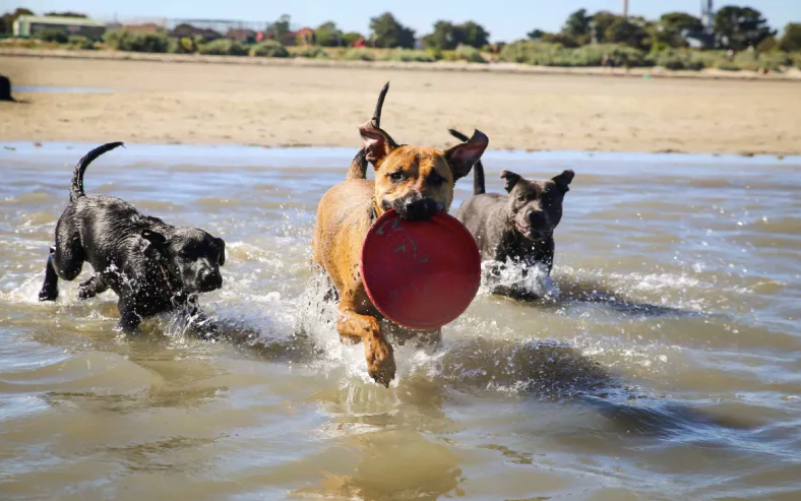Pet Care
All You Need To Know About Life And Features Of An Irish Terrier Dog

All You Need To Know About Life And Features Of An Irish Terrier Dog
You’ve decided to get an Irish Terrier as a pet. But, do you know what to expect? If not, read this article to learn everything you need to know.
Here you’ll find the basics of breed health, exercise, personality, and more!
Read on to learn more about this adorable and energetic breed! After reading this article, you’ll be ready to buy your new pet!
Breed Characteristics
The Irish Terrier is known as a daredevil. Its bold and independent character leads to a life of great devotion and loyalty.

While this breed is good-natured and gentle with its owners, it is also prone to being aggressive towards other dogs and small animals.
The Irish Terrier’s wire coat requires daily combing and shaping and requires trimming at least four times a year for show dogs.
The breed’s small, dark eyes are distinctive and recognizable, and the elbows are positioned parallel to the body and free from the sides.
The coat of the Irish terrier is typically golden red wheaten. Dark red is not the only acceptable color; wheaten coats are often of inferior quality.
The Irish terrier can have a small patch of white on its chest, but no other area of its body should be white. As the Irish terrier ages, its hair can become grey.
Although the coat of the Irish terrier is not prone to matting, it should be clipped at least twice a year to maintain its beauty.
The Irish terrier is a medium-sized breed with a wiry red coat and strong, athletic build. This breed is said to be the oldest of the Irish terrier breeds.
They are intelligent, loyal, and have boundless energy. Although the Irish terrier is a beloved pet, it isn’t the best dog for everyone.

If you’re planning to buy one, consider the breed’s temperament before committing. A dog with a strong guarding instinct, the Irish terrier can be difficult to housebreak.
They like to explore and dig and can be a bit sassy. But once you’ve mastered this, you’ll be happy with this breed!
While they are not particularly aggressive with other dogs, they may become aggressive with strangers or intruders.
They are also gentle and loving, so they’re a good choice for families with children.
Personality
The personality of an Irish terrier is as intense as its red coat. The breed is extremely loyal, protective, and good-tempered.

This breed is also very affectionate, loving, and loyal to its family. They have strong territorial awareness, and will not hesitate to protect their home or family members from threats.
However, if you are considering an Irish terrier as a pet, be sure to spend time socializing with your puppy at an early age.
Generally, Irish Terriers do well in the family, making them excellent pets. However, they can be reserved around children and other dogs.
They may also be wary of strangers. Whenever they meet a stranger, they should be on a leash, but they should be allowed to sniff them and examine them.
If the playtime gets too rough, you should end the session and put the dog back on its leash. The Irish terrier can be difficult to find.
Their love of hunting animals and affection for people is hard to match. They are extremely loyal and devoted to their owners but can be difficult to housebreak if not properly socialized.
When housebreaking, it is important to demonstrate leadership. Achieving a balanced lifestyle means an active and happy dog, which will keep the owner happier.

Otherwise, they will seek out other activities to entertain themselves. While Irish terriers are very loyal, they do not get along with other animals.
They are also independent and may get bored easily without enrichment. They were first documented as an official breed in Scotland during the 1880s.
They soon became a popular breed throughout the United Kingdom, and were eventually brought to the United States.
When the Irish terrier became popular, they swept across the ocean and into the United States.
Exercise
There are a variety of ways to exercise your Irish Terrier dog, but the most basic method is to walk them.

When you take your dog for walks, he or she will probably jump up and down with excitement when he sees you holding the lead. Another exercise for your Irish Terrier dog is to play fetch.
The game is a fun way to exercise your dog and give it lots of social time. Whether your Irish Terrier enjoys playing with toys or running up and down hills, you will find that your pet loves to keep busy.
The Irish Terrier is a very active breed, and you’ll need to make sure it gets lots of exercises every day.
A high-quality protein diet will provide your pet with the building blocks needed for strong muscles. Make sure to choose real meat for your Irish Terrier’s diet.
You should also offer your dog fish oil or fortification if possible. Omega-3 fatty acids can help reduce inflammation due to injury or arthritis, as well as nourish the skin and coat.
Your Irish Terrier dog’s exercise routine is important for several reasons. It can reduce the likelihood of bladder stones and kidney problems.

As with any other breed, this breed is prone to certain health issues. For example, your Irish Terrier could develop cysts or other lesions in its bladder and can become overweight.
This makes it important to provide a safe, enclosed area when you exercise your Irish Terrier. You should also keep your Irish Terrier on a leash while you exercise him.
If you live in an area that sees lots of activity, your Irish Terrier can provide endless entertainment.
Agility courses are fun and challenging, and your Irish Terrier may find them very rewarding. However, it is best to introduce your Irish Terrier to smaller animals at a young age.
A playful dog can be a good companion for children, but it should not be confined to an apartment or crate! Keeping your dog active is essential for keeping him healthy and happy.
Health
The thyroid glands sit alongside the windpipe on both sides of the dog’s neck.

In the event that these glands are not producing enough thyroid hormone, your Irish Terrier may be suffering from hypothyroidism.
Some signs of this condition include dry skin, excessive weight gain, and hair loss. If you notice any of these symptoms, it’s time to visit a veterinarian.
Thyroid disease in dogs is usually cured with synthetic hormone pills. The size of an Irish terrier is small to medium, and its coat is wiry and double-coated.
The coat needs to be hand-brushed or stripped once or twice a week. It also requires frequent bathing.
Whether you bathe your dog at home or take it to the groomer, you’ll find that a groomer who is knowledgeable about this breed is essential.
If you groom your dog yourself, it’s important to find someone with experience grooming Irish terriers.
While Irish terriers are not generally susceptible to many diseases, a few are common amongst them. Progression of retinal atrophy is a disease of the retina.

While it doesn’t cause pain, the symptoms of this disease may include night blindness and dilated pupils. Genetic tests are available to determine the risk of your dog contracting this disease.
Genetic testing may also be performed in order to determine the severity of the condition in your dog. The Irish terrier is one of the healthiest purebred dogs.
The life expectancy of an Irish terrier is usually around thirteen to fifteen years. The breed is nearly free of inherited health problems.
However, some Irish terriers may suffer from a condition known as hyperkeratosis, which causes dry and cracked feet. Cystic bladder stones are also a rare problem in Irish terriers.
Regardless of the symptoms your Irish terrier dog may experience, it’s important to visit your veterinarian as soon as possible.
Lifespan
The Irish Terrier is an ancient dog breed. This breed of terrier is native to Ireland, and it is one of many that make up the terrier family.

Irish Terriers were one of the first terriers to be given a separate class in the Dublin dog show in 1873.
Their shortened lifespan is due to the fact that they have low energy levels. The life span of an Irish Terrier is typically around nine years, though they can live up to 15 years.
The Irish Terrier is an excellent companion for children, as their youthful spirit and medium size make them a great choice for families with young children.
However, it’s a good idea to supervise interactions between a child and an Irish Terrier. While the Irish Terrier is considered to be a good pet for children, they do have some risks.
Hypothyroidism occurs when the body isn’t producing enough thyroid hormones. This causes your dog’s weight to fluctuate but can be easily treated with a synthetic hormone pill.
The Irish Terrier is known as the daredevil of dogdom. It is bold, inquisitive, and strong-willed.
It is very protective of its owner and needs plenty of exercises and play time outdoors. When properly exercised, it is a calm, loyal companion.

But, if left alone, he can be aggressive with other dogs and small animals. However, the Irish Terrier needs daily exercise to keep his health at a top level.
The diet of an Irish Terrier dog should be based on the breed’s activity level and age. It should be fed approximately one to 1.5 cups of high-quality dry food twice a day.
Irish Terriers should also be exercised regularly to keep their weight in control.
The right amount of exercise and proper nutrition can go a long way toward extending the life of your Irish Terrier. However, there are some limitations to this diet.
We appreciate you for taking the time to read!
Finally, we hope you found this article interesting? And what do you think about ”All You Need To Know About Life And Features Of An Irish Terrier Dog!?”
Please you should feel free to share or inform your friends about this article and this site, thanks!
And let us know if you observe something that isn’t quite right.
Pet Care
Heartwarming Moment: Man and Dog Share Playtime on the Slide

Heartwarming Moment: Man and Dog Share Playtime on the Slide
Introduction: A Tale of Joy and Connection
In a world often filled with hustle and bustle, it’s the small, heartwarming moments that remind us of the beauty of life. Recently, a touching scene unfolded at a playground in El Paso, Texas, where a man and his canine companion shared a moment of pure joy on a slide. This heartwarming interaction captured the essence of the special bond between humans and their furry friends, captivating the hearts of millions across the globe.
A Playful Encounter
On a typical afternoon, Jennifer Lopez, accompanied by her children, stumbled upon a heartwarming sight at a local playground. Instead of children frolicking on the equipment, it was a man and his beloved dog who took center stage. The man, exuding happiness, encouraged his furry friend to ascend the slide before gleefully sliding down, accompanied by cheers and treats from his devoted owner.
Capturing the Moment
Moved by the simplicity and beauty of the scene, Jennifer Lopez shared the heartwarming encounter on TikTok, where it quickly gained traction, resonating with viewers far and wide. In just a matter of days, the video amassed millions of views and garnered an outpouring of love and admiration for the undeniable bond between the man and his canine companion.
A Lesson in Appreciating Life’s Simplicity
For Jennifer Lopez, the encounter served as a poignant reminder of the beauty found in life’s simplest pleasures. Amidst personal struggles and moments of despair, witnessing the sheer joy radiating from the man and his dog instilled a newfound appreciation for life’s blessings and the power of unconditional love.
Community Response and Reflections
The viral TikTok video sparked an overwhelming response from viewers, with thousands expressing gratitude for the heartwarming moment shared by Jennifer Lopez. Comments flooded in, praising the unwavering bond between the man and his furry friend and highlighting the profound impact of their playful interaction.
FAQs (Frequently Asked Questions)
What inspired Jennifer Lopez to share the heartwarming encounter on TikTok?
Jennifer Lopez was deeply moved by the joyful interaction between the man and his dog at the playground, prompting her to share the heartwarming moment on TikTok to spread positivity and uplift others.
How did the viral video impact Jennifer Lopez?
The viral video served as a source of inspiration and hope for Jennifer Lopez, offering a fresh perspective on life’s challenges and reminding her of the beauty found in simple, everyday moments.
What message did viewers take away from the heartwarming encounter?
Viewers were touched by the unconditional love and joy exhibited by the man and his dog, emphasizing the importance of cherishing life’s simple pleasures and fostering meaningful connections with loved ones, both human and animal.
How did the viral video contribute to the conversation surrounding mental health and well-being?
The heartwarming encounter depicted in the viral video served as a beacon of hope for individuals struggling with mental health issues, offering a reminder of the healing power of love, companionship, and moments of joy.
What does the heartwarming encounter symbolize?
The heartwarming encounter symbolizes the profound bond between humans and animals and underscores the significance of finding joy and connection in everyday experiences, even amidst life’s challenges.
We appreciate you for taking the time to read this article!
Finally, we hope you found this article interesting? And what do you think about ”Heartwarming Moment: Man and Dog Share Playtime on the Slide!?”
Please feel free to share or inform your friends about this article and this site, thanks!
And let us know if you observe something that isn’t quite right.
Source: Newsweek
Pet Care
Understanding the Difference: Dog Parent vs. Owner

Understanding the Difference: Dog Parent vs. Owner
Embracing the Role: Dog Parenting vs. Ownership
In a heartfelt exploration of the human-canine bond, Shelby Susnick from Atlanta, Georgia, sheds light on the nuanced difference between being a dog parent and a dog owner. While many cherish their pets as cherished companions, Susnick emphasizes a deeper connection that transcends mere ownership.
Family Dynamics: Viewing Dogs as Family Members
For Susnick, the distinction lies in how one perceives their furry companion—are they simply an animal one owns, or an integral part of the family? Dog parents often prioritize their pet’s well-being, with schedules revolving around their canine companion’s needs, such as ensuring they are not left alone for extended periods.
Love Beyond Ownership: Dogs as Family
Susnick’s bond with her dog Russell exemplifies this sentiment. Russell, a rehomed dog who survived parvovirus thanks to Susnick’s love and care, is more than just a pet; he’s her son. Through her TikTok videos, Susnick shares glimpses of the joyous life Russell leads, filled with love, playtime, and adventures.
Defining Moments: A Video on Dog Parenting
In a recent TikTok video, Susnick addresses the distinction between being a dog parent and an owner. Through relatable scenarios, she illustrates how dog parents prioritize empathy, companionship, and understanding, viewing their pet as a cherished member of the family rather than a possession.
Community Response: Embracing Dog Parenthood
Susnick’s video resonated deeply with dog lovers worldwide, sparking conversations about the evolving role of pet ownership. With over 1.3 million views and growing, the video has inspired many to reflect on their relationship with their furry companions and strive to embody the qualities of a dog parent.
Frequently Asked Questions (FAQs)
What distinguishes a dog parent from a dog owner?
A dog parent views their canine companion as a cherished family member, prioritizing empathy, companionship, and understanding.
How does Shelby Susnick’s experience with her dog Russell exemplify dog parenthood?
Susnick’s bond with Russell, a rehomed dog who survived parvovirus, illustrates the deep love and commitment of a dog parent beyond mere ownership.
What prompted Susnick to create the TikTok video on dog parenting?
Susnick’s desire to address misconceptions and highlight the unique bond between dogs and their human companions inspired her to create the video.
Why did Susnick’s video resonate with viewers, garnering over 1.3 million views?
The video struck a chord with dog lovers worldwide, sparking discussions about empathy, companionship, and the evolving role of pet ownership.
How can individuals transition from being dog owners to dog parents?
By prioritizing empathy, spending quality time with their pets, and viewing them as integral family members, individuals can cultivate a deeper connection with their canine companions.
We appreciate you for taking the time to read this article!
Finally, we hope you found this article interesting? And what do you think about ”Understanding the Difference: Dog Parent vs. Owner!?”
Please feel free to share or inform your friends about this article and this site, thanks!
And let us know if you observe something that isn’t quite right.
References: Newsweek: Link to original article
Pet Care
Heartfelt Tale: Dog’s Unusual Behavior Sparks Grief Discussion

Heartfelt Tale: Dog’s Unusual Behavior Sparks Grief Discussion
Unveiling a Canine’s Grieving Heart: Bowser’s Touching Tribute to His Sister
The loss of a loved one reverberates deeply within every corner of the human heart, but what about our furry companions? In a poignant revelation that tugged at heartstrings across the internet, a dog owner shared the touching story of Bowser, whose world was forever altered by the passing of his beloved sister, Sasha.
Since Sasha’s departure, Bowser has embarked on a peculiar journey of grief, manifesting in a poignant refusal to eat from his bowl—a behavior that has sparked a profound discussion on canine emotions and resilience.
A Tender Moment Unfolds: Bowser’s Human-Like Gestures
In a heartwarming display of empathy and connection, Bowser, a mastiff with an indomitable spirit, has found solace in an unexpected ritual: dining at the table, spoonfed homemade meals of ground beef, black beans, and brown rice.
His owner’s TikTok post, shared under the username bowserthemastiff, captured the essence of Bowser’s newfound habit, offering a glimpse into the depth of his emotional world following Sasha’s passing.
As Bowser delicately savors each morsel, his poignant gesture transcends mere sustenance, serving as a testament to the enduring bond he shared with his sister.
Navigating the Landscape of Canine Grief: Insights from Experts
Dogs, like humans, are not immune to the profound impact of loss. The American Kennel Club affirms that dogs possess the capacity for grief, often exhibiting behavioral changes in response to the loss of a companion.
Signs of canine grief may include withdrawal, decreased appetite, lethargy, and vocalizations, among others. As Bowser grapples with the absence of his sister, his refusal to eat from his bowl emerges as a poignant manifestation of his grief—a poignant reminder of the depth of emotion that our beloved pets experience.
Viral Sensation: Bowser’s Tale Resonates Across Social Media
Bowser’s touching tribute to his sister swiftly captivated audiences worldwide, eliciting an outpouring of empathy and support from viewers across TikTok.
With over 252,200 views and 10,100 likes, Bowser’s story has transcended the confines of social media, sparking a meaningful dialogue on the complexities of canine emotion and resilience in the face of loss.
As comments overflow with messages of solidarity and compassion, Bowser’s journey serves as a poignant reminder of the enduring bonds that unite humans and their cherished companions.
@bowserthemastiff #saddog #spoileddog #dogs #bigdogs #bowsersworld #fyp #pickyeater #dogdad #cutedog #dogsoftiktok #bigdogsoftiktok #mastiffsoftiktok #mastiffs #englishmastiff #petsoftiktok #funnydogvideos #doggo #dogfacts #bigbaby
Community Voices: Echoes of Empathy and Understanding
In response to Bowser’s heartfelt tale, social media users from far and wide have shared their own experiences of grief and resilience with unwavering compassion.
From heartfelt anecdotes to practical advice, the online community has rallied behind Bowser, offering words of encouragement and solace during his time of need.
As each comment serves as a beacon of empathy, Bowser’s journey emerges as a testament to the profound impact of companionship and the resilience of the human-animal bond.
Final Words of Reflection
As Bowser navigates the labyrinth of grief, his journey serves as a poignant reminder of the profound depth of emotion that transcends species boundaries.
In honoring the memory of his beloved sister, Sasha, Bowser embodies the resilience of the canine spirit, demonstrating the power of love and companionship to endure even in the face of loss.
As we bear witness to Bowser’s poignant tribute, may we cherish the bonds that unite us with our furry companions, finding solace in the enduring warmth of their unconditional love.
Frequently Asked Questions (FAQs )
What prompted Bowser’s refusal to eat from his bowl?
- Bowser’s refusal to eat from his bowl emerged as a poignant response to the loss of his sister, Sasha, reflecting his profound sense of grief and emotional upheaval.
How have social media users responded to Bowser’s story?
- Social media users have rallied behind Bowser with messages of empathy and support, sharing their own experiences of loss and resilience in solidarity with his journey.
What insights do experts offer regarding canine grief?
- Experts affirm that dogs are capable of experiencing grief, often exhibiting behavioral changes in response to the loss of a companion, highlighting the depth of emotion that our beloved pets possess.
What role does companionship play in Bowser’s journey through grief?
- Bowser’s enduring bond with his sister, Sasha, underscores the profound impact of companionship in navigating the complexities of grief, serving as a source of solace and resilience amidst loss.
How can pet owners support a grieving dog like Bowser?
- Pet owners can offer comfort and reassurance to a grieving dog by providing a nurturing environment, engaging in familiar routines, and offering gentle encouragement and affection during this challenging time.
We appreciate you for taking the time to read this article!
Finally, we hope you found this article interesting? And what do you think about ”Heartfelt Tale: Dog’s Unusual Behavior Sparks Grief Discussion!?”
Please feel free to share or inform your friends about this article and this site, thanks!
And let us know if you observe something that isn’t quite right.
Source: Newsweek
-

 Pet Care2 years ago
Pet Care2 years agoThe Best Dog Collars For 2022
-

 Dogs2 years ago
Dogs2 years agoBichon Frise: The Happy, Playful, and Cuddly Companion
-

 Trending Pet Stories11 months ago
Trending Pet Stories11 months ago2023 ‘World’s Ugliest Dog’ Winner: Scooter’s Tale of Resilience
-

 Animals2 years ago
Animals2 years agoAre There Animals Having Down Syndrome?
-

 Pets2 years ago
Pets2 years agoThe Fascinating World Of The Red Chameleon
-

 Dogs2 years ago
Dogs2 years agoTop 10 Most Popular Dog Breeds According To AKC.
-

 Dogs2 years ago
Dogs2 years ago21 Dog Breeds That Resemble Bears Or Teddy Bears!
-

 Dogs2 years ago
Dogs2 years agoEskimo Dogs from Canada – What Are They? – Find Out!






























